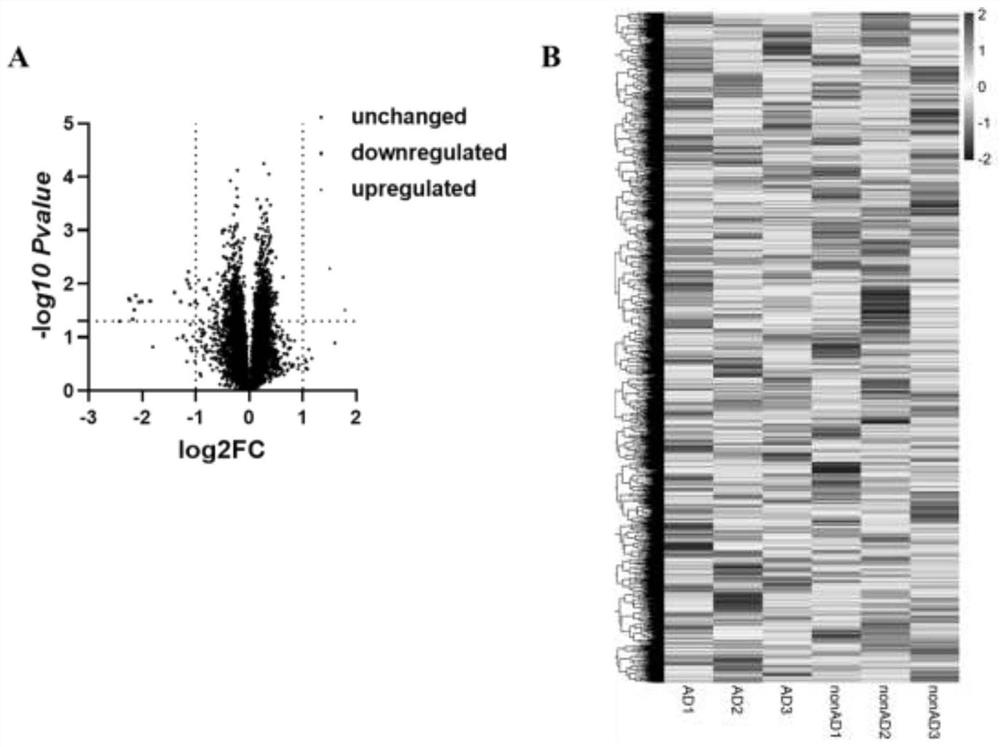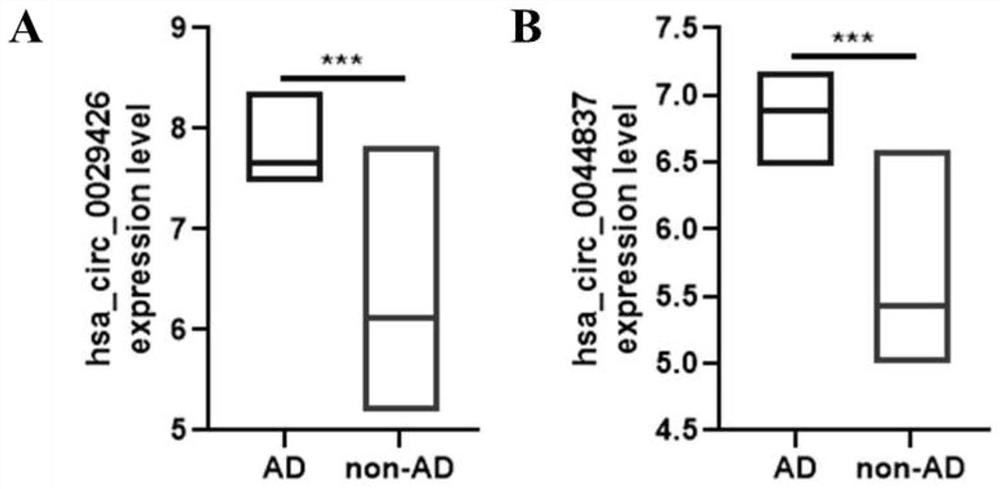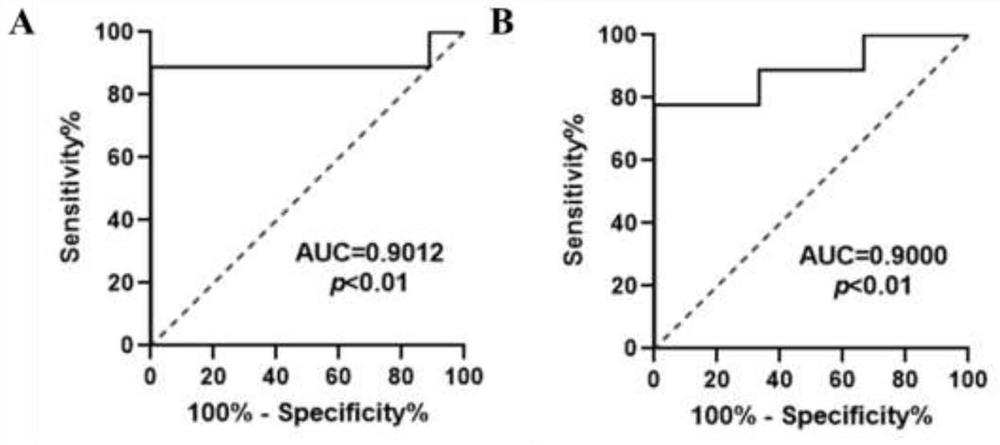Application of brain cell-derived exosome circular RNA in serum as Alzheimer's disease diagnostic marker
A technology for Alzheimer's disease and exosomes, applied in the field of medical diagnosis, which can solve the problems of large patient damage, low utilization rate, and few product types
- Summary
- Abstract
- Description
- Claims
- Application Information
AI Technical Summary
Problems solved by technology
Method used
Image
Examples
Embodiment 1
[0024] Example 1 Identification of brain-derived exosome circular RNA expression profile in serum
[0025] Collect 3 cases of Alzheimer's disease patients and 3 cases of non-Alzheimer's disease patients with clinical symptoms similar to Alzheimer's disease serum, each 5ml, separate exosomes, and use high-throughput sequencing to detect the circularity in exosomes RNA (circRNA) expression.
[0026] Step 1: Isolation of brain-derived exosomal RNA in serum:
[0027] 1) 5ml of serum from each test object was centrifuged at a speed of 300g and room temperature for 10 minutes to remove the precipitate and retain the supernatant;
[0028] 2) Centrifuge the supernatant obtained in the previous step for 30 minutes at a rotation speed of 10,000 g and room temperature, remove the precipitate and retain the supernatant;
[0029] 4) Add magnetic beads coupled with L1CAM (L1 cell adhesion molecule), GLAST (Glutamate aspartate transporter) and TMEM119 (transmembrane protein 119) antibodies...
Embodiment 2
[0035] Example 2 Quantitative detection of brain-derived exosomal circular RNA that can be used as an early diagnosis of Alzheimer's disease in serum
[0036] Collect 100 cases of Alzheimer's disease patients and 50 cases of non-Alzheimer's disease patients with clinical symptoms similar to Alzheimer's disease serum, each 5ml, separate exosomes from brain cells, and use high-throughput sequencing to detect exosomes. In vivo circular RNA (circRNA) expression.
[0037] Step 1: Isolation of brain-derived exosomal RNA in serum:
[0038] 1) 5ml of serum from each test object was centrifuged at a speed of 300g and room temperature for 10 minutes to remove the precipitate and retain the supernatant;
[0039] 2) Centrifuge the supernatant obtained in the previous step for 30 minutes at a rotation speed of 10,000 g and room temperature, remove the precipitate and retain the supernatant;
[0040]4) Add magnetic beads coupled with L1CAM (L1 cell adhesion molecule), GLAST (Glutamate asp...
PUM
| Property | Measurement | Unit |
|---|---|---|
| diameter | aaaaa | aaaaa |
Abstract
Description
Claims
Application Information
 Login to View More
Login to View More - R&D
- Intellectual Property
- Life Sciences
- Materials
- Tech Scout
- Unparalleled Data Quality
- Higher Quality Content
- 60% Fewer Hallucinations
Browse by: Latest US Patents, China's latest patents, Technical Efficacy Thesaurus, Application Domain, Technology Topic, Popular Technical Reports.
© 2025 PatSnap. All rights reserved.Legal|Privacy policy|Modern Slavery Act Transparency Statement|Sitemap|About US| Contact US: help@patsnap.com



